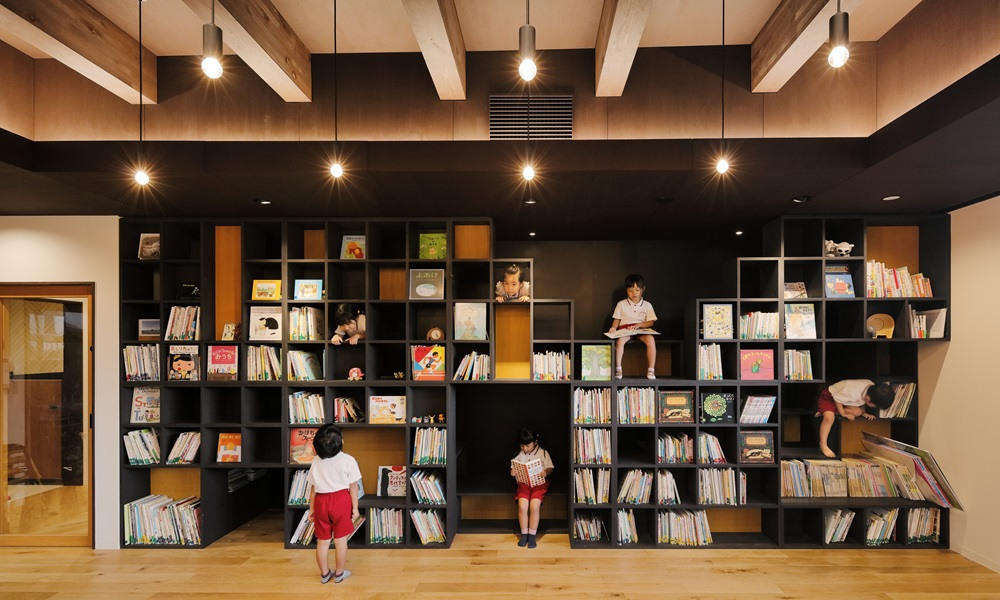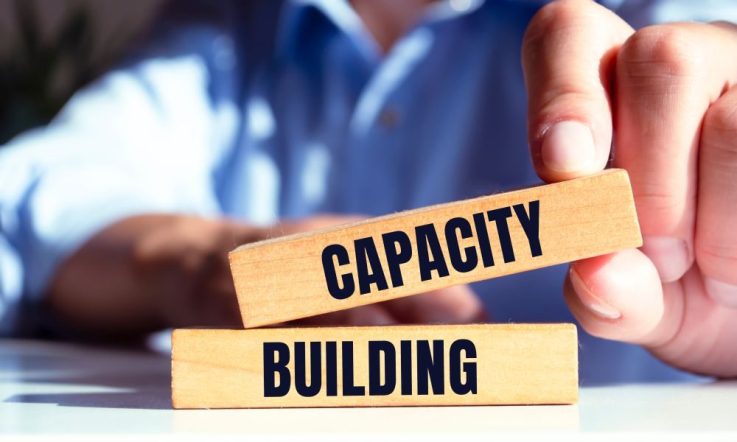This podcast from Teacher is supported by Monash University. Check out Season 3 of their podcast ‘Let’s Talk Teaching’ and join the conversation with leading academics in teacher education.
Thanks for tuning in to this episode of Teacher Staffroom, where we catch you up on the latest evidence, insight, and action in education. I’m Dominique Russell.
As we head into the last month of 2025, many of you might be starting to turn your mind towards the beginning of the next school year. A big part of getting ready for a new year is, of course, setting up your learning spaces. Whether it be how you’ll set up your own classroom, the school library space, or even outdoor areas, there’s plenty to consider. We’ve published a range of new content on the topic of learning spaces recently at Teacher. In this episode, I’ll bring you up to speed on it all. Don’t forget, like all of our other episodes of Teacher Staffroom, I’ll be posing some questions for you throughout this podcast, so you can feel free to pause the audio as you go, gather some colleagues, and discuss together how these stories might be relevant to your school context. Let's jump in.
In recent news, 12 newly completed school build projects have been recognised at this year’s World Architecture Festival in Miami. In a recent photo story on Teacher, we explored the design of the winning school, and also the 11 finalists.
The winning design – which is a kindergarten and nursery in Japan – involved the reconstruction of a kindergarten and nursery school in the northern part of the country on a site that had poor accessibility from the road, a limited site area, and also steep topography. Key features of the new building include a pathway that also functions as a play area, a reading area and also a lookout point. The building has many windows help to regulate temperature and also reduce the building’s energy consumption.
A big theme throughout the list of school projects that were recognised at the festival was really making the most of a small site, and also integrating nature into the learning areas. So, that brings me to a question for you to think about. When reflecting on your own school context, what are the current challenges you face in your indoor and outdoor learning spaces? Are you able to address any of them during the 2026 school year?
Staying overseas, and I’d also like to highlight with you a recent article we published that was written by Dr Dirk Hastedt, Executive Director of the International Association for the Evaluation of Educational Achievement (also known as the IEA). In the article he wrote for us, Dirk unpacks the value and also the impact of international large-scale assessments – things like the Trends in International Mathematics and Science Study (or TIMSS) and the Progress in International Reading Literacy Study (or PIRLS) that you often see us talking about here at Teacher. In the article, he also shares how the IEA is working to bridge the research-practice gap through resources designed specifically for teachers.
What I found really interesting in this piece was Dirk’s explanation of how these large-scale international assessments can be relevant to you in your own classroom. Here’s what he wrote:
Studies are carefully designed so that the results obtained from a sample population are sufficient to be representative of a whole target population. In other words, assessments are administered to enough random classes in a target grade level that we can say with high levels of confidence that the results reflect all classes in that grade level across the country. So, though your own class might not have be tested, enough classes will have been tested that the results represent all students – including your own. Also, IEA studies are curriculum-based; assessments are based on participating countries’ curricula, making the results very relevant right across their education systems.
It's a great explanation there of how important representation is for these assessments. Coincidentally, we also published an infographic recently looking at some Australian findings from PISA 2022. That is, of course, the OECD’s Programme for International Student Assessment and it’s another example of a large-scale assessment. Each cycle of the assessment includes a teacher questionnaire, and, in our infographic, we presented a closer look at one of the questionnaire topics which was all about encouraging mathematical thinking. We give you a state-by-state breakdown of how many teachers utilise 9 specific behaviours related to encouraging mathematical thinking in most of their lessons – things like teaching students how to use mathematical logic when approaching new situations and asking students how different topics are connected to a big mathematical idea.
You can find the full infographic at our website, teachermagazine.com, which is also, of course, where you’ll find all of the other content I’m talking about in today’s episode, entirely free to access.
You’re listening to a podcast from Teacher magazine, supported by Monash University's Faculty of Education. Listen to their podcast ‘Let’s Talk Teaching’, hosted by former teacher, Associate Professor Rebecca Cooper, as she invites teachers and alumni with a range of educational backgrounds and experiences to share their insights and discuss practical topics to help you develop and grow as a teacher. Season 3 is available now.
Another element of learning spaces we’ve been highlighting this year at Teacher is the use of technology – whether it’s in the form of a Tech Hub at the school or even an eSports lab. An absolute highlight for me recently was my interview with David Jeffery. He’s a teacher aide from Queensland, and I spoke to him about his experience supporting students participating in the annual STEM Video Game Challenge, which is a free video game development challenge that invites students in years 3-12 across the country to design and develop and video game based on a given theme in teams of 1-4 students. David’s position at the school includes running the school’s Tech Hub, which is a room full of tech from laptops and iPads to robotics and 3D printers and it’s designed to encourage self-guided extracurricular exploration. It’s here that work on the STEM Video Game Challenge is completed.
David Jeffery has supported students with the challenge for years now, and in 2025 they had 23 teams enter across the school. One of these teams ended up being named a winner. And, if you’ve ever thought about encouraging students at your school to participate in this challenge, this article is for you. David offers so much advice and practical tips for running the challenge in your school, and he’s got some great insight into how it supports the school to teach key skills like technologies, maths and the arts. Here’s part of what he had to say:
Technologies is a tricky subject area in primary schools. Tech’s a great enabler, and the national curriculum does teach concrete skills and understandings. But I believe the best learning happens when there are no guide rails and students learn skills because they need them, right now, to meet their own defined goals. I think that’s a major opportunity the challenge provides. I love seeing the ‘I’m bad at maths’ students feverishly crunching the numbers to solve a gravity problem in their game. They don’t even realise they just taught themselves algebra and the laws of motion!
This quote brings me to a question for you to think about. If you work in a primary school setting, how did you teach Technologies this year? What worked well, and where did you identify areas for improvement? Could the STEM Video Game Challenge be something that could work well for you?
Now, if you haven’t listened to our latest podcast episode that we published last week, it’s got to be the next thing you listen to. Our editor Jo Earp sat down with Mali Jorm, Madison Dearnaley and Tracy Kelly to talk about managing school library and reading spaces, including building a student-driven collection, creating fresh and welcoming spaces, and some strategies to encourage reading for pleasure.
There’s so much to take away from the episode and the different perspectives the 3 guests brought. Here, though, I’d like to highlight what Teacher Librarian Tracy Kelly said about how she uses library furniture to create a flexible space that’s inviting to students:
My biggest tip really is having your shelves on wheels. You can move the collection around. You can showcase different genres, for example, and you can also wheel them around to test and try different sorts of nooks and reading areas. Then you get an idea of how the students use them, the traffic through the library, if that's flowing well or not. Sometimes it's a hit and a miss and you can move the shelves around and it doesn't quite work, and you try a different structure in the library. But we have found that by having them on wheels, we can move all the shelves out of the way. When we can invite authors to come and speak to our students, the shelves wheel and move really easily so that we can use the space for all different sorts of things in the library and then wheel them back again.
So, that clip there brings me to a couple questions for you to think about. Thinking about the library and reading spaces in your own school: How do you go about creating a fresh and welcoming space for all students? What kind of things inform your decision when it comes to new stock or creating displays featuring existing titles that you have?
And finally, I wanted to highlight a recent reader submission article from Anthony Hockey, Principal St Mary's Catholic Primary School in Victoria, that looks at outdoor spaces. Anthony’s school currently has a 10-year plan to improve its playground and outdoor spaces in order to create a playground that engages more students and improves student behaviour. In the article, he shares the work they’ve completed so far – from expanding the sandpit, to working with a local artist to create a musical cubby.
What I wanted to share with you today, though, is Anthony’s advice for other schools. Here’s what he said:
My advice to other schools is to not just think about providing more sporting equipment. Generally, the sporty students are fine and will work out something to do with limited equipment. Think of the students who struggle, the ones who are alone, have sensory needs, find it hard to make friends. Give them something to do, somewhere to be, and somewhere to belong.
That quote there brings me to a couple final questions for you today. How inclusive are your play spaces for students with sensory needs, social anxieties, or those who struggle to find playmates? What could be done to better support these students?
That’s all I have for you today. Thanks for listening. I’ll leave the links to the full articles and podcast episodes and that infographic I mentioned today in the transcript of this podcast, which you can find under the podcast tab at our website. We’ll be back with a new episode very soon.



